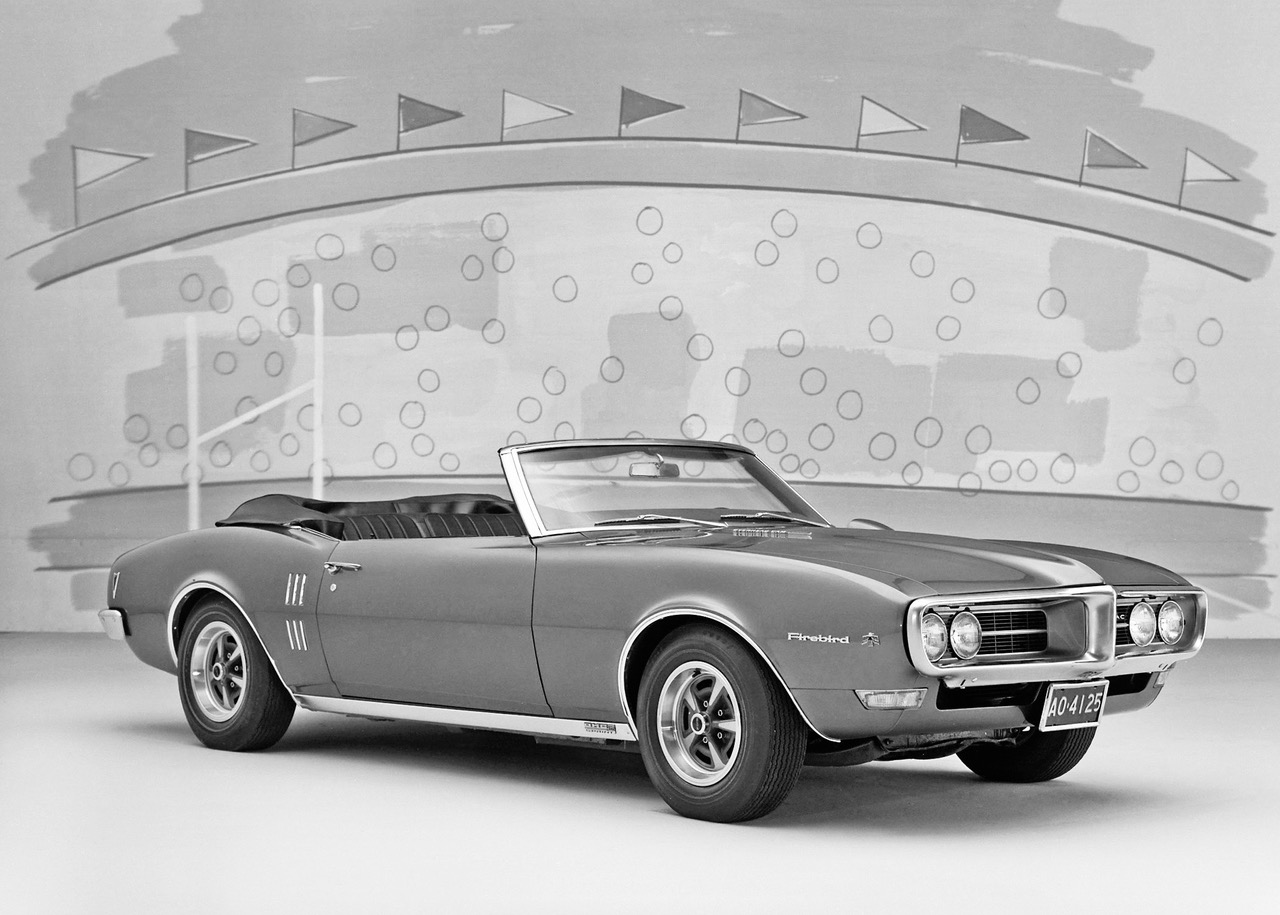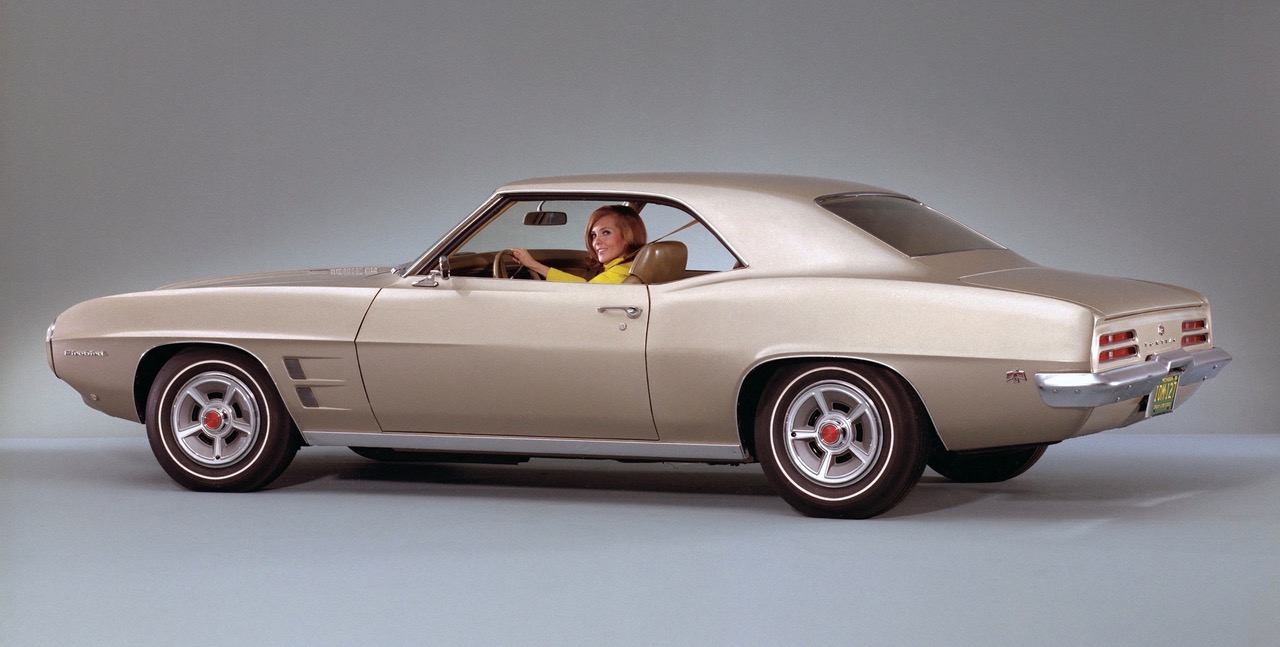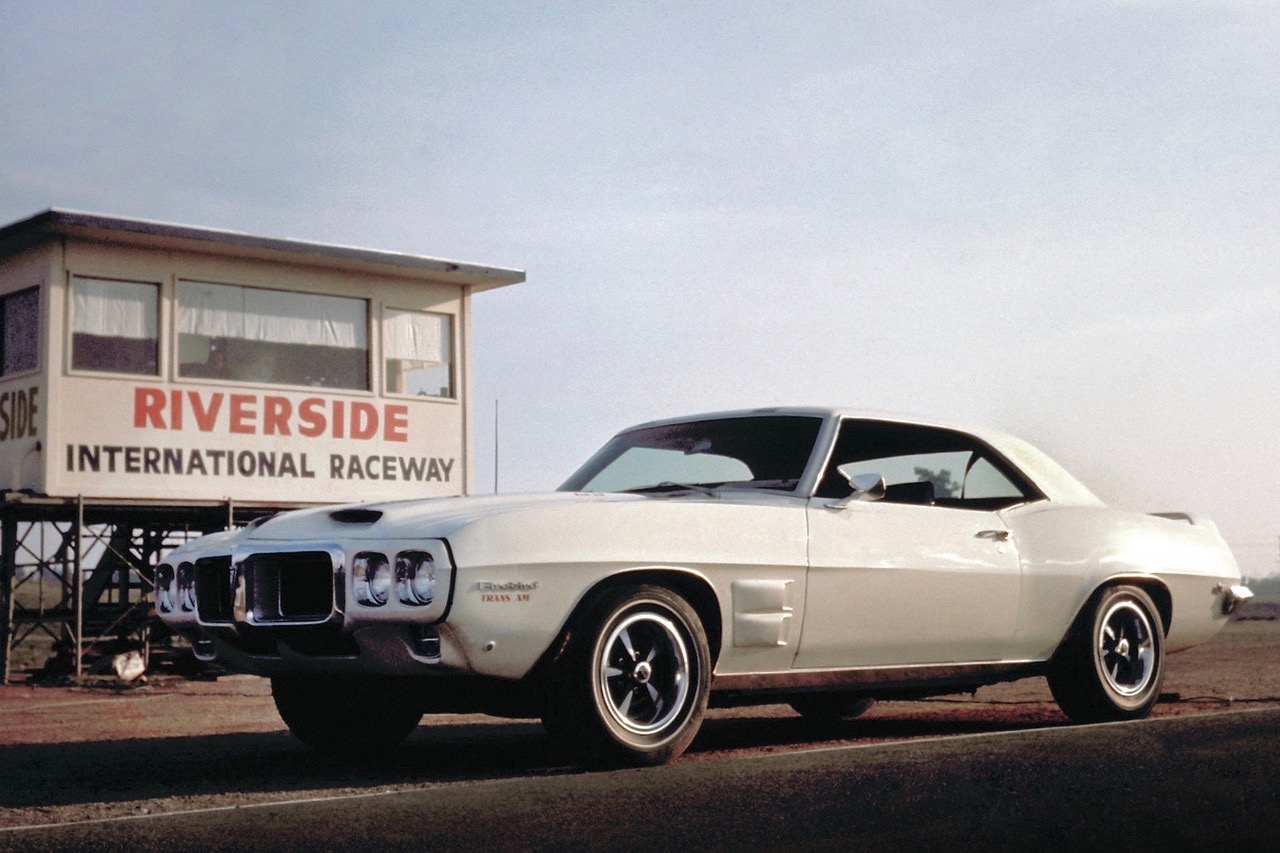
It's a safe assumption to say today that the runaway success of the Ford Mustang really changed the landscape of the American automobile scene in the late 1960s! It's a well-known topic, Ford came out with the Mustang and they immediately sold like hot cakes, and it left General Motors in the dark as they had nothing to rival it.
Of course, there's a whole story all about these times, and it has been well communicated over the years. Chevrolet was two years late in responding (their Camaro) and this story related to Pontiac Division, six months later, bringing to market the Firebird, which was closely based on the Camaro. Here the focus is on what GM did when it came time for the Firebird, with this overview of the development and details of the first generation of Pontiac's pony car, 1967-'69 model years.

Here's how he summarized the 1967 Firebird in 1979:
"The Firebird was an offshoot of the Chevrolet Camaro. When GM moves into a smaller-car market, it always gives the first entry in that market to Chevrolet Division, later, Pontiac may be given a version of the car, and sometimes Buick and Oldsmobile.
It was widely known in the mid-1960s that General Motors was rushing through the Camaro project to give Chevrolet an answer to the popular Mustang. As the only head-to-head competitor of the Ford Division, Chevy was to have the first crack at that market. But I pushed long and hard to get a version for Pontiac. And I guess because of my persistence, management agreed to let us have a version of the sporty compact car only six months after the introduction of the first Camaro in the fall of 1966.
We took the Camaro, studied it and gave it a lower look by adding a different, tighter suspension system. When we brought out the Firebird in early '67, it was a measurably better performing and handling car than its sister, the Camaro. And it sold well, adding large profits to the division and enhancing Pontiac's brighter image."


Engine selections forthe Firebird ranged from a base inline 6-cylinder with a Single Overhead Camshaft, all the way to the Ram Air 400-cid V8. Here's the horsepower breakdown in the powerplants:
230-cid OHC Six 1-BBL 165 HP
230-cid OHC Six 4-BBL 215 HP
326-cid V8 2-BBL 250 HP
326-cid V8 HO 4-BBL 285 HP
400-cid V8 4-BBL 325 HP
400-cid V8 RAM-AIR 4-BBL 325 HP *RATED TO COMPLY WITH GM POLICY OF10-POUNDS-PER-HP RATIO


Besides the styling changes, the Pontiac F-body was given a U-section torque arm on the right-hand side of the rear suspension (to limit axle wind-up) on all models except for the single-barrel six. 400-cid engine cars received two of the "traction bars, "the additional bar added to the left-hand side to deal with the extra power output. Mono-leafs were used that first year. The rear track was widened by 1.1-inch. F70-14 "Wide-Oval" Firestone tires are standard on all Firebird models, and the suspension was lowered front and rear one inch. For increased trunk space, the newly developed "Space Save" (collapsible) inflatable spare tire came standard.







INTRODUCED TO THE PUBLIC FEBRUARY 23, 1967
There were nearly 3500Pontiac dealers across the country at the time and in order to properly launch the car, at least one Firebird was placed on the showroom floor at every one of them at opening day. With the late start in the model year the car was well received by the media, as it gained a lot of exposure in print media.
Total 1967 Firebird sales: 82,560
QUOTABLE QUOTE
"At last, in early 1967, the public got its first look at the new Pontiac Firebird. The announcement turned out to be successful beyond expectations. The Chevrolet Camaro rollout six months earlier had actually been somewhat of a disappointment. The car was perceived as a bit bland and frankly not much of an improvement over the three-year-old Mustang. The 'Fabulous Five' ad campaign had made the whole Pontiac Firebird project look bigger than it really was. Firebirds were seen as something special, and sales came quickly." Jim Wangers


For the 1968 model year Firebirds, they were mostly a "carry-over" car with two minor exterior changes. Federal safety laws for 1968 vehicles required "side marker" lights front and rear on all cars and trucks, and for Firebird it resulted in a newly designed front park/signal light, in the form of a "wrap around" lens that was actually borrowed from the Tempest models. In the rear, small "V-crest" lamps were fitted directly above the bumper tips.
The other change done to '68 versions was the elimination of the door vent windows, replaced with one piece door glass which enhanced visibility and a cleaner appearance. "Astro Ventilation" is how the factory described it. Gone were the old kick-panel vents and now replaced with a round air inlet on the lower dash. A larger dash pad and now seat belts for all occupants. In addition, Firebird's rear bumper received a minor revision, with a slightly enlarged, deeper shape.

Under the hood, the 326 became the new 350 (2BBL 265 HP, 4BBL 320 HP) and the six-cylinder engine gained 20 cubic inches. Ram Air 400 powerplants now rated at 340 HP. Mono leaf springs were gone on V8 cars, upgraded with multi-leaf springs, and staggered rear shocks.
All 1968 Pontiac V8 engines received newly-designed cylinder heads with deeper, smooth-shaped combustion chambers that provided faster burning. The valves were relocated to be more centrally positioned over the bores of the cylinders. In addition to increased breathing capacities, the end result of these changes was a reduction of exhaust emissions.

That "Ram Air II" option, which arrived in March of 1968, was fitted with cylinder heads that incorporated large round exhaust ports 36-percent more air flow), new forged aluminum 10.75:1 pistons, new Arma steel crankshaft, a revised camshaft(.480-inch lift intake, .475-inch lift exhaust, 308/320 degree duration), dual high-rate valve springs, new pushrods and guides. In the May 1968 edition of Super Stock & Drag Illustrated magazine, a Royal Pontiac-modified Ram AirII Firebird ran low 12-second runs down the quart-miles in excess of 116 mph. According to production records, only 110 of the Ram Air II '68 Firebirds were produced, 98 4-speeds and 12 automatics.



The second year for Firebird, and with the full model year time period, saw increased sales to the point that to deal with the increased production of Firebird models, on March 4th, 1968, the GM Assembly Plant in Van Nuys started production of Pontiac F-body cars to augment the Lordstown, Ohio, GM Plant. Total sales increased to 107,112 for '68 model year run.
For 1969 General Motors gave the F-body a reskinning of the '67-68 sheet metal styling, giving the cars a unique "one-year-only" appearance. Firebird's quad headlights remained, but now they each had their own individual pods, made from Lexan material, separating them, done in body color. The pointed nose extended into the hood, with the '69 grille now smaller in width as a way for the designers to reduce the front end chrome. The more formal parking lights now placed below the outer headlights.

The sides of the 1969 Firebird were sculptured differently, the wheel openings now squared off and a peak line (sharply defined crease) over the front wheels, extending to the doors. Behind the front wheel area, there were simulated vents added. The rear wheel openings featured a "speed spear" type styling element, and the fuel door was replace with the filler cap now hidden behind the license plate.

Just 17 of the 1969 Ram Air IV Firebird convertibles were made, and this example was special-ordered in this Windward Blue hue. Other notable options include Deluxe Parchment interior, 8-track, power antenna, and walnut shift knob. The big deal on the RA-IV powerplant is the use of cylinder heads that had round ports,1.65:1 rocker arms, the .520" / .520" lift, 288/302-duration #10factory camshaft (AKA Mac McKeller grind) and aluminum intake manifold. This convertible example has the close ratio 4-speed gearbox and 3.90:1 rear gears. To authenticate the rarity of the car, the engine has the correct "WH" code along with "727" castings on the heads, plus it has the header-like exhaust manifolds that are unique to this rare engine.




It was on March 8, 1969, that a new "Trans Am" model of the Firebird was introduced. Officially, it was known around Pontiac showrooms as "Option Code 322 UPCWS4". The package added $725 over and above that of a Firebird 400. First things first: what was the story behind giving the name "Trans Am" to the car?





Because of corporate etiquette, Pontiac had to restrict the power output of the 400-cid engines to deal with the 1 HP per 10-pounds rule guideline GM had at the time. The cars came delivered to the Pontiac dealerships with the secondary throttle blades limited to around 80-percent of full opening. HP ratings on Firebird 400 engines were never as high as the exact same powerplants in GTO cars. The power was intentionally reduced, but it was easily fixed in an instant, removed with a pair of pliers to get the same 100-percent wide open throttle as the big brother GTOs.

Production of the 1969 was 697 total: 687 coupes, 8 convertibles. Pontiac records indicate 55 of them were factory fitted with the Ram Air IV engine. According to Herb Adams years later, the only direct instructions he received from John DeLorean on creating the production 1969 Trans Am model was this: "Make it better than the Z/28!"
Total 1969 Firebird sales: 87,708










